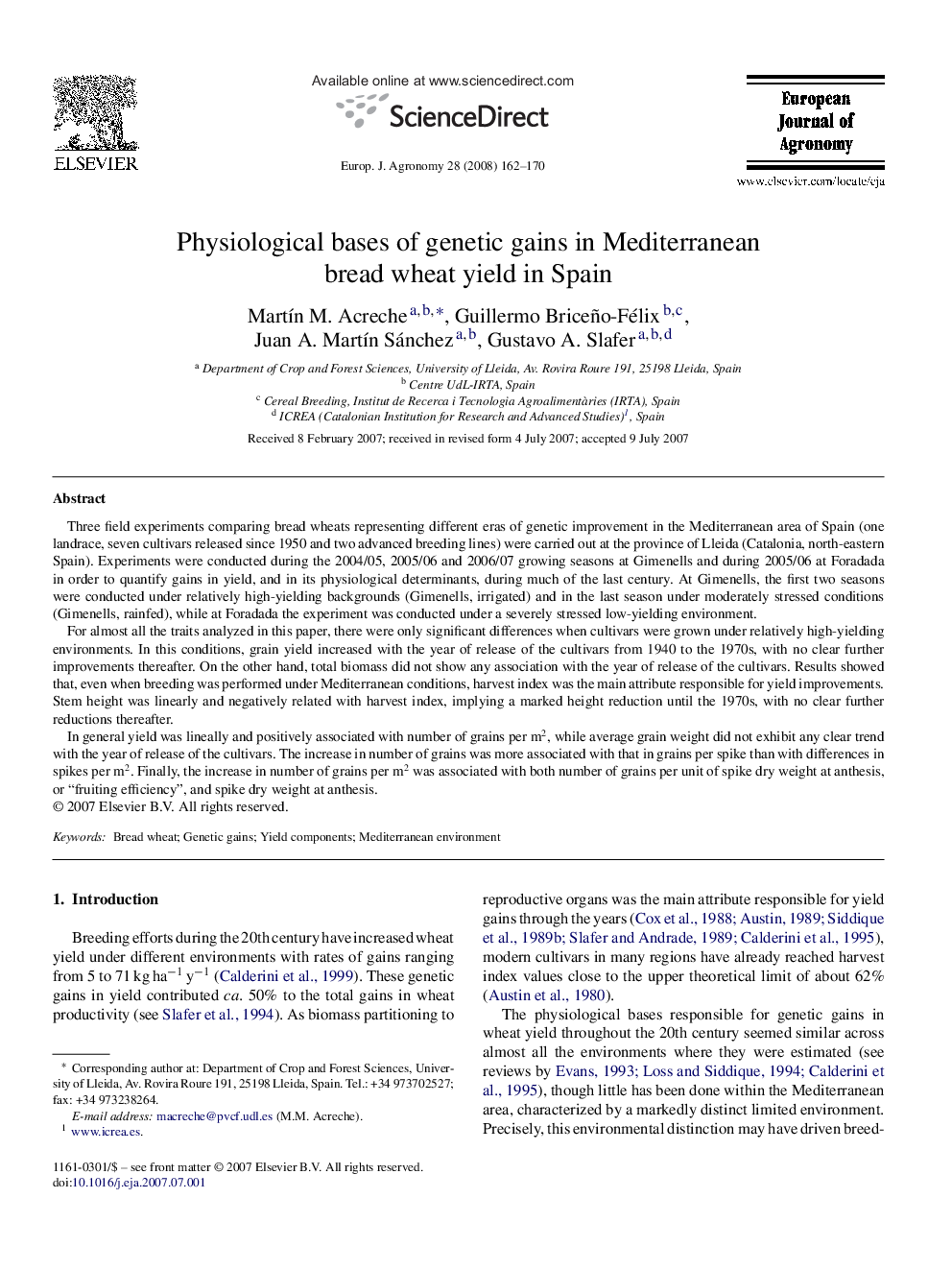| کد مقاله | کد نشریه | سال انتشار | مقاله انگلیسی | نسخه تمام متن |
|---|---|---|---|---|
| 4509449 | 1624519 | 2008 | 9 صفحه PDF | دانلود رایگان |

Three field experiments comparing bread wheats representing different eras of genetic improvement in the Mediterranean area of Spain (one landrace, seven cultivars released since 1950 and two advanced breeding lines) were carried out at the province of Lleida (Catalonia, north-eastern Spain). Experiments were conducted during the 2004/05, 2005/06 and 2006/07 growing seasons at Gimenells and during 2005/06 at Foradada in order to quantify gains in yield, and in its physiological determinants, during much of the last century. At Gimenells, the first two seasons were conducted under relatively high-yielding backgrounds (Gimenells, irrigated) and in the last season under moderately stressed conditions (Gimenells, rainfed), while at Foradada the experiment was conducted under a severely stressed low-yielding environment.For almost all the traits analyzed in this paper, there were only significant differences when cultivars were grown under relatively high-yielding environments. In this conditions, grain yield increased with the year of release of the cultivars from 1940 to the 1970s, with no clear further improvements thereafter. On the other hand, total biomass did not show any association with the year of release of the cultivars. Results showed that, even when breeding was performed under Mediterranean conditions, harvest index was the main attribute responsible for yield improvements. Stem height was linearly and negatively related with harvest index, implying a marked height reduction until the 1970s, with no clear further reductions thereafter.In general yield was lineally and positively associated with number of grains per m2, while average grain weight did not exhibit any clear trend with the year of release of the cultivars. The increase in number of grains was more associated with that in grains per spike than with differences in spikes per m2. Finally, the increase in number of grains per m2 was associated with both number of grains per unit of spike dry weight at anthesis, or “fruiting efficiency”, and spike dry weight at anthesis.
Journal: European Journal of Agronomy - Volume 28, Issue 3, April 2008, Pages 162–170